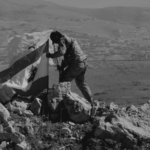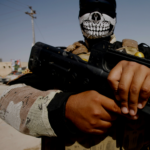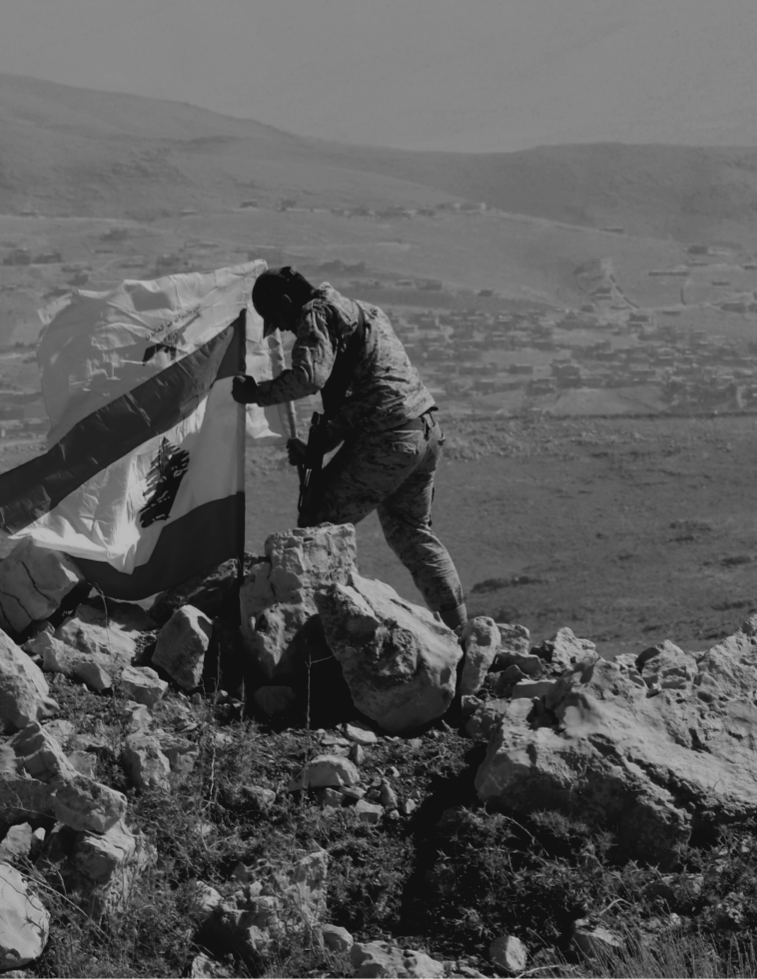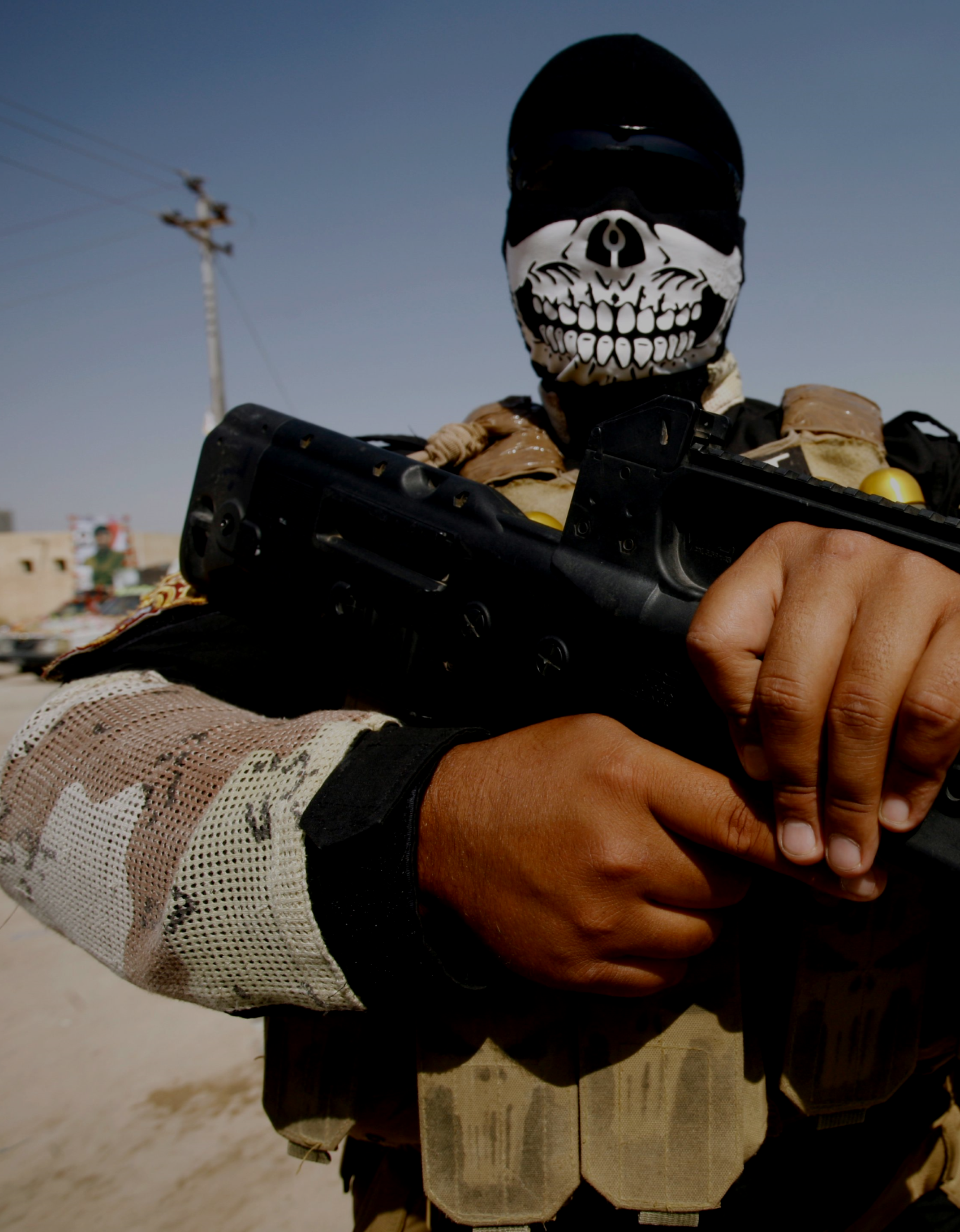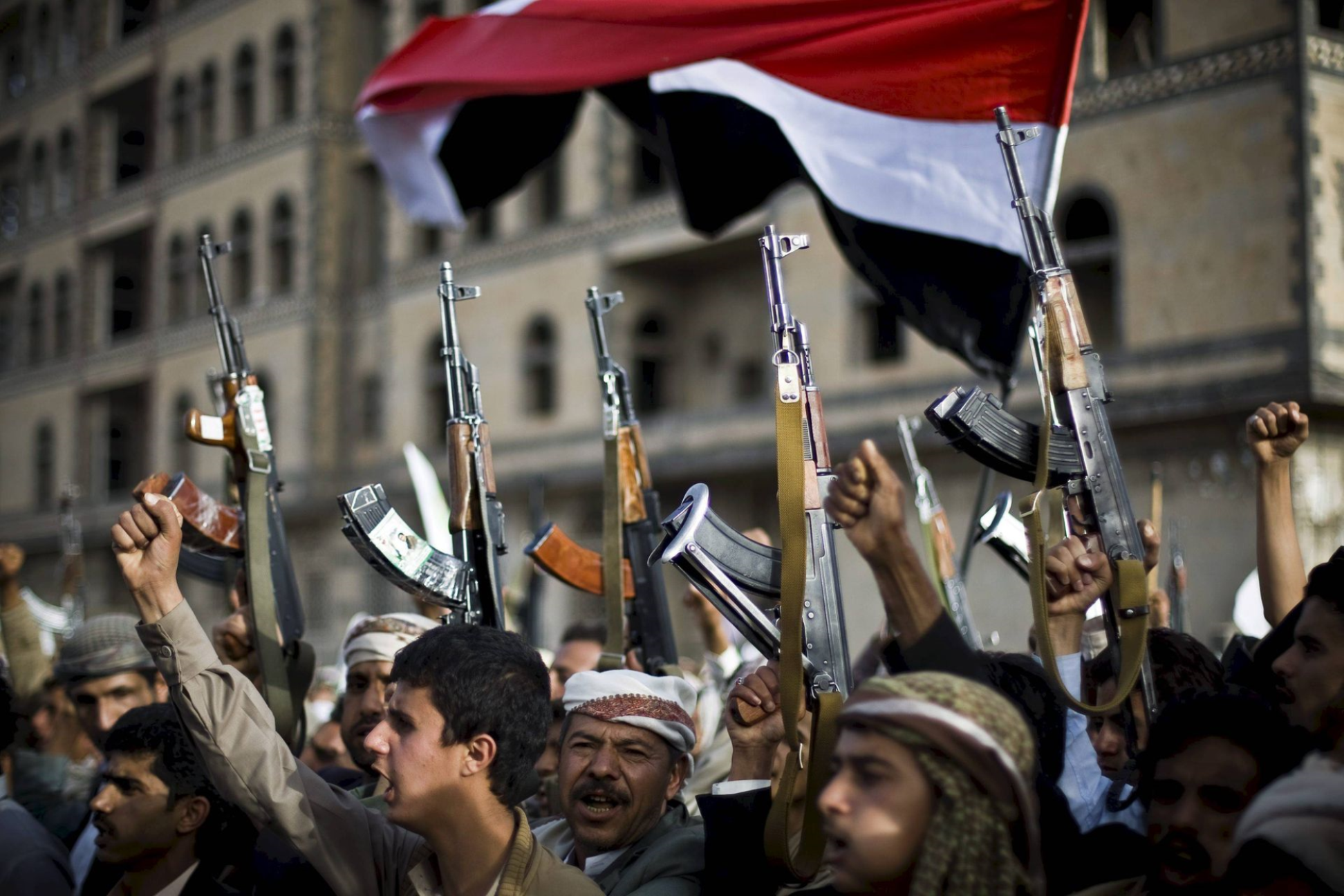Iran’s support of the Assad regime in the Syrian Civil War
Written by: Samuel Lisanti
Iran has played a major role in supporting Bashar al-Assad’s regime, both in terms of material support and manpower. Since the outbreak of the Syrian Civil War in 2011, Iran has been one of Syria’s staunchest allies. Iran has, primarily, two motives for supporting the Assad regime: it seeks to prevent the spread of the so-called Islamic State of Iraq and ash-Sham (ISIS) in the region, and it hopes to create a “Shi’ite Crescent” by geographically linking the various Shi’ite powers in the Middle East. To that end, Iran has provided massive material support to Assad and various Iranian proxies in Syria, usually through weapons exports. It has also trained thousands of militia members and sent thousands of Iranians to Syria to assist in training and battle planning.
Iran frequently uses the threat of ISIS to justify its involvement in the Syrian civil war. Iranian Supreme Leader Ayatollah Ali Khamenei claims that if Iran had not started fighting ISIS in Syria, the radical group would be poised to attack Iran next. In addition, many Iranians have categorized the civil war in Syria as part of a broader attack on Shi’ite Muslims generally, highlighting the Sunni-Shi’ite tension that undergirds most Middle East politics.1
Iran’s material support for the Assad regime is substantial. Sources close to Stafan de Mistura, the United Nations Special Envoy to Syria, estimate that Iran has been spending close to six billion dollars per year in support of Assad. Other estimates place the figure between fifteen and twenty billion dollars annually.2
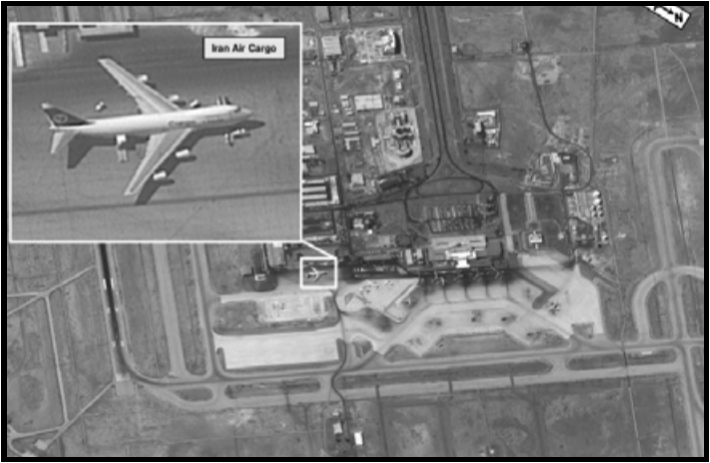
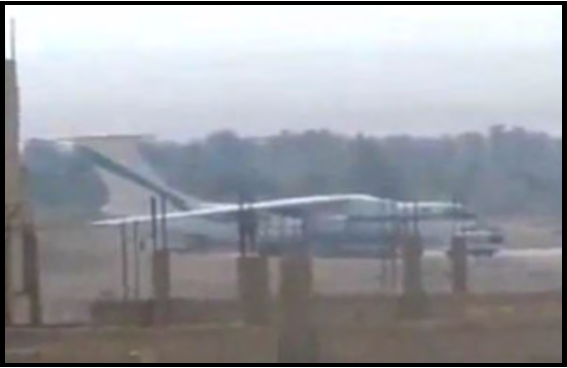
Iran’s primary avenue of support to Assad is through weapons exports. Since 2011, Iran has exported weapons to the Syrian regime in violation of U.N. Security Council resolutions.3 Al-Monitor reports that the presence of Iranian-made weapons in Syria is both “extensive” and “widely-recorded.” These weapons include Safir tactical military vehicles, Shaheen sniper rifles, and a variety of personal weapons.4 Other Iranian weapons in use include the 240 mm and 333 mm Falaq 1 and 2 rockets, which can be fired from pickup trucks at targets as far away as ten kilometers. Iranian-backed militias have frequently been seen using these rockets. Perhaps the most concerning export is the Fateh-110 D1 rocket system, which can fire a 750 kilogram warhead as far as 300 kilometers.5
Iranian airlines have been one of the major avenues Iran has used to deliver supplies to the Assad regime. Iranian airlines have surreptitiously carried military supplies from Iran to Syria since shortly after the Syrian Civil War started in 2011. Supply flights have increased in frequency since 2015, shifting from weekly to daily flights.6 There are five Iranian airlines and two Syrian airlines that regularly participate in these supply runs.7 These weapons have been supplied to Syrian Armed Forces, Hezbollah, and the Iranian Revolutionary Guard Corp (IRGC).6
Iran and its operatives have to great lengths to secure a land route by which to transport supplies into Syria. In June, Iranian-backed militias secured a land route that runs from Syria’s Mediterranean Coast all the way to Iran. The corridor, which runs through Kurdish-controlled Iraq, could help Iran achieve a broader goal of geographically connecting Iran and its various allies through a “Shi’ite Crescent,” a swath of Shia-controlled land in an otherwise Sunni-dominated region. Iran has sought to create such a geographic entity since the Iraq-Iran War ended in 1988.8
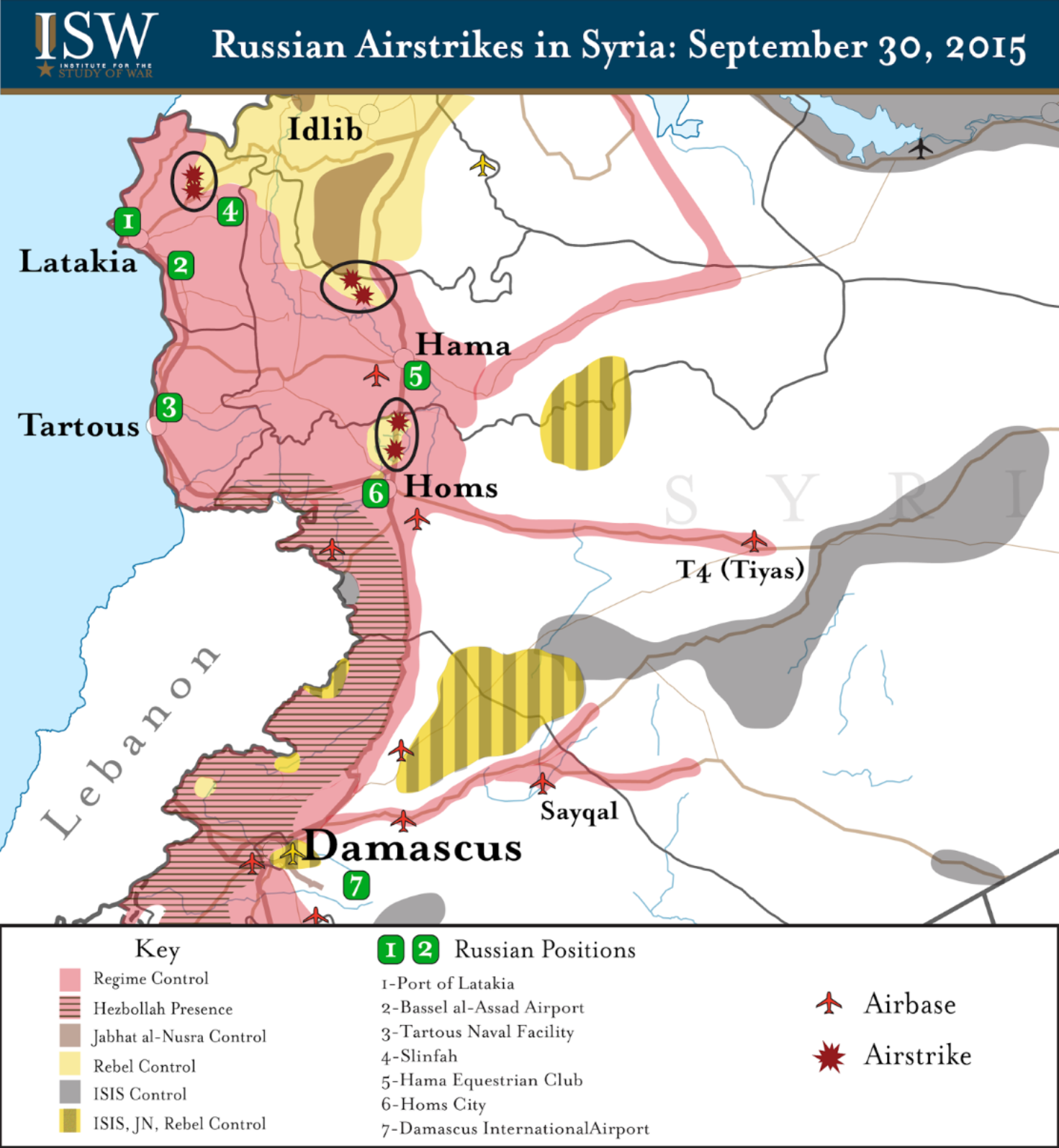
In addition to material support, Iran has also provided massive manpower support to the Assad regime, primarily through various militias. Faysal Itani, resident senior fellow at the Atlantic Council’s Rafik Hariri Center for the Middle East, described Iran’s presence in Syria as “more deeply invested and with far more influence on the ground” than Russia’s. He went so far as to attribute Assad’s very survival to Iran’s support.9 From early 2015 to late 2016, militia forces in and around Aleppo alone grew to somewhere between 6,000 and 8,000 troops.10 Some estimates of total militia troop strength in Syria place the number near 100,000.11
Iran’s militias occupy a central position within the pro-Assad coalition, supplying Russia with military intelligence, and spearheading the conquest of critical territory. Major General Yahya Rahim Safavi, a senior advisor to Iran’s Revolutionary Guard, admitted that Iranian militia have been providing information to Russia’s air force about targets.12 After forces loyal to Assad recaptured Aleppo, Seyed Yahya Rahim-Safavi, Iran’s defense minister, publicly proclaimed the key role that Hezbollah, an Iranian-backed militia, played in retaking the town.10
Pro-Assad militias are as diverse in origin as they are widespread across the conflict. Hezbollah, known better for its Lebanon-based terrorism, is one of the largest militias supporting Assad, and it was the first to do so. Also present are several Iraqi militias fighting under the command of Iranian Major General Qassem Suleimani.10 Additionally, the IRGC has been recruiting Afghani refugees to fight in the conflict, sometimes under threat of deportation, according to Human Rights Watch.13
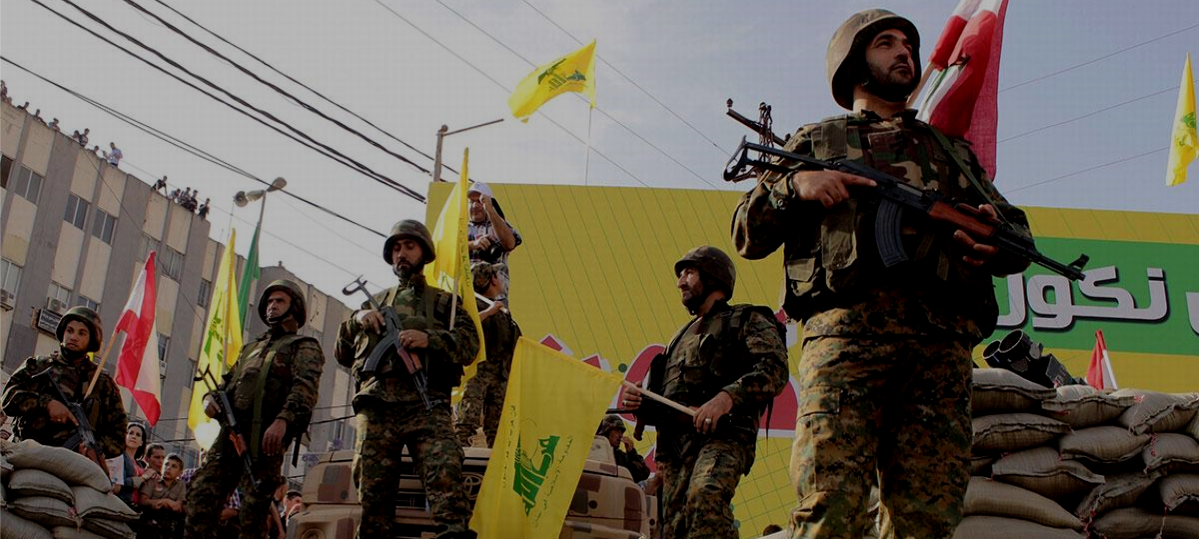
In addition to providing extensive support to its militias, Iran has sent its own troops to Syria. Iran has publicly admitted to sending members of the IRGC to Syria since 2012.14 Mohammad Ali Jafari, head of the IRGC, said in February 2016, “Our policy is not to send many people to Syria to directly fight, but we are witnessing a great deal of eagerness and desire from the IRGC soldiers to be in Syria.”1 IRGC members have generally served as military advisors and trainers to Syria’s armed forces and the various militias operating in the area. This sometimes means Iranian operatives are on the frontlines of battle.15
Iran’s participation is not discouraged by casualties. By the end of 2016, as many as 1,000 Iranians had died in the Syrian conflict. Iranian-backed militias have also paid a heavy price for their involvement. Hezbollah loyalists estimate the group has lost at least 1,600 fighters since the civil war began.10
The Syrian Civil War is unlikely to be resolved in the near future. The conflict is now in its eighth year, and the effects of it are only growing worse. Iran has gone to great effort to prevent the downfall of the Assad regime, exacerbating and prolonging the conflict. Diminishing Iran’s support in Syria would weaken the Assad regime. To do so, the U.S. should consider reinstating sanctions on Iranian airlines operating in the West. Iran and its coalition of militias show no sign of decreasing their role in the conflict. They see their role in the Syria Civil War as part of a greater struggle to achieve Shiite unity in the Middle East. Because of this, Iran will continue to be one of Assad’s greatest allies. ■
-
-
-
- Arash Karami. “Iran defends its support for Syria, Iraq.” Al Monitor. 10 February 2016. http://www.al-monitor.com/pulse/fr/contents/articles/originals/2016/02/iran-syria-iraq-shrine-khamenei-hezbollah.html
- Maysam Behravesh. “But really, why is Iran still backing Assad? A psychological analysis.” Middle East Eye. 15 February 2017. http://www.middleeasteye.net/columns/loyal-end-iran-s-assad-commitment-653248723
- Joe Vaccarello. “Iran sending banned weapons to Syria, U.N. report says.” CNN. 12 May 2011. http://edition.cnn.com/2011/WORLD/meast/05/12/un.syria.iran.weapons/index.html
- Abbas Qaidari. “Is Iran becoming a major regional arms producer?” Al Monitor. 24 March 2016. http://www.al-monitor.com/pulse/originals/2016/03/iran-weapons-arms-experts-iraq-syria-lebanon.html
- Farzin Nadimi. “How Iran’s Revived Weapons Exports Could Boost Its Proxies.” The Washington Institute. 17 August 2015. http://www.washingtoninstitute.org/policy-analysis/view/how-irans-revived-weapons-exports-could-boost-its-proxies
- Emanuele Ottolenghi. “Boeing Should Think Twice Before Iran Sale.” Forbes. 23 August 2016. https://www.forbes.com/sites/realspin/2016/08/23/boeing-should-think-twice-before-iran-sale/#288e539039b5
- Ed Blanche. “Iranian airlines under U.S. scrutiny for Syria arms flights.” UPI. 8 May 2017. https://www.upi.com/Top_News/Voices/2017/05/08/Iranian-airlines-under-US-scrutiny-for-Syria-arms-flights/8411494245661/
- Dexter Filkins. “Iran Extends Its Reach In Syria.” The New Yorker. 9 June 2017. https://www.newyorker.com/news/news-desk/iran-extends-its-reach-in-syria
- Angelica LaVito. “Why Trump attacks Iran for supporting Syrian strongman Assad – but ignores Russia doing it.” CNBC. 15 June 2017. https://www.cnbc.com/2017/06/15/trump-criticizes-iran-support-for-syrias-assad-but-ignores-russias.html
- Martin Chulov, Saeed Kamali Dehghan, and Patrick Wintour. “Iran hails victory in Aleppo as Shia militias boost Syria’s Bashar al-Assad.” The Guardian. 14 December 2016. https://www.theguardian.com/world/2016/dec/14/iran-aleppo-syria-shia-militia
- Howard Altman. “Mideast tour showcases challenges facing calm, inquisitive CentCom leader.” Tampa Bay Times. 30 July 2016. http://www.tampabay.com/news/military/macdill/mideast-tour-showcases-challenges-facing-calm-inquisitive-centcom-leader/2287507
- Martin Chulov and Kareem Shaheen. “Sectarian fighters mass for battle to capture east Aleppo.” The Guardian. 29 September 2016. https://www.theguardian.com/world/2016/sep/29/aleppo-attack-foreign-syrian-fighters-plan-shia-islamic
- “Iran Sending Thousands of Afghans to Fight in Syria.” Human Rights Watch. 29 January 2016. https://www.hrw.org/news/2016/01/29/iran-sending-thousands-afghans-fight-syria
- Ian Black. “Iran confirms it has forces in Syria and will take military action if pushed.” The Guardian. 16 September 2012. https://www.theguardian.com/world/2012/sep/16/iran-middleeast
- “Iran to continue sending military advisers to Syria: Guards commander.” Reuters. 2 May 2017. http://www.reuters.com/article/us-mideast-crisis-syria-iran/iran-to-continue-sending-military-advisers-to-syria-guards-commander-idUSKBN17Y2EK
-
-
Photo Credit:
Syrian Graffiti | https://www.alaraby.co.uk/english/file/getimagecustom/baf7f7f9-064c-4ca1-ba7a-ad47dea88c1c/850/479
Iranian Jet at Damascus International Airfield | http://www.understandingwar.org/sites/default/files/IranianStrategyinSyria-1MAY.pdf
Iranian Jet in Palmyra, Syria | http://www.understandingwar.org/sites/default/files/IranianStrategyinSyria-1MAY.pdf
2015 Map of Hezbollah and Assad Regime Presence in Syria | http://static4.businessinsider.com/image/560c148b9dd7cc19008be2c5-1476-1600/russian%20airstrikes%20september%2030%20syria.png
Hezbollah Troops in Syria | http://www.greanvillepost.com/wp-content/uploads/2017/05/hezbollah-troops-4-at-a-supporters-rally.jpg

